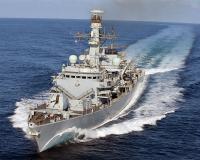 Naval ships are very expensive to build and operate and in the best of all possible worlds would never be used. Nevertheless, they exist for a purpose. Recently, while taking part in commemorations for the Battle of Jutland centenary, HMS Kent intercepted a Russian submarine as it cruised towards the English Channel. It was reported that the Stary Oskol, a Kilo-class submarine capable of carrying cruise missiles and torpedoes, was first detected by NATO forces in the North Sea. HMS Kent escorted the submarine past the Strait of Dover on Wednesday morning.
Naval ships are very expensive to build and operate and in the best of all possible worlds would never be used. Nevertheless, they exist for a purpose. Recently, while taking part in commemorations for the Battle of Jutland centenary, HMS Kent intercepted a Russian submarine as it cruised towards the English Channel. It was reported that the Stary Oskol, a Kilo-class submarine capable of carrying cruise missiles and torpedoes, was first detected by NATO forces in the North Sea. HMS Kent escorted the submarine past the Strait of Dover on Wednesday morning.
 I am never sure what to make of the yearly “World Oceans Day.” On a world where 71% of the globe is covered by oceans and where oceans contain 99 percent of the living space on the planet, shouldn’t every day be “World Ocean’s Day”?
I am never sure what to make of the yearly “World Oceans Day.” On a world where 71% of the globe is covered by oceans and where oceans contain 99 percent of the living space on the planet, shouldn’t every day be “World Ocean’s Day”?
Also, should this be a day for celebrating or mourning? Continue reading
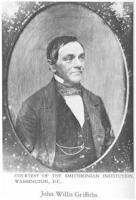 On Saturday, July 23rd, the National Maritime Historical Society will unveil a headstone at the previously unmarked grave of legendary naval architect John W. Griffiths. The ceremony will take place in Queens at the Linden Hill United Methodist Cemetery at 10:30 am.
On Saturday, July 23rd, the National Maritime Historical Society will unveil a headstone at the previously unmarked grave of legendary naval architect John W. Griffiths. The ceremony will take place in Queens at the Linden Hill United Methodist Cemetery at 10:30 am.
John W. Griffiths was born in New York City in 1809 and died in 1882. He was one of the greatest of all American naval architects and a yet he died largely forgotten. Griffiths was a pioneer in both sail and steam, a designer, a shipbuilder, a hydrodynamicist, a writer and an editor. The historian William Brown Meloney wrote of Griffiths, “Ocean conqueror by sail and by steam, he sleeps as he died, unhonored and unsung — forgotten by a heedless people . . . ” With the unveiling of the new headstone, he will be at least somewhat less forgotten.
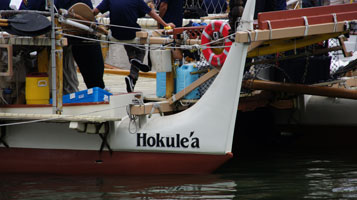 The Hawaiian voyaging canoe Hōkūleʻa was officially welcomed to New York yesterday morning in ceremonies in North Cove on the Hudson River. The voyaging canoe and her crew, in the third year of an epic voyage around the world, were greeted warmly by a large crowd under stormy skies and intermittent showers. The location was fitting as it is literally steps from the Winter Garden Atrium, a ten story glass enclosed pavilion which is the home of sixteen 40′ tall Washingtonia robusta palm trees. If New York could not provide blue Hawaiian skies, at least we can offer palm trees.
The Hawaiian voyaging canoe Hōkūleʻa was officially welcomed to New York yesterday morning in ceremonies in North Cove on the Hudson River. The voyaging canoe and her crew, in the third year of an epic voyage around the world, were greeted warmly by a large crowd under stormy skies and intermittent showers. The location was fitting as it is literally steps from the Winter Garden Atrium, a ten story glass enclosed pavilion which is the home of sixteen 40′ tall Washingtonia robusta palm trees. If New York could not provide blue Hawaiian skies, at least we can offer palm trees.
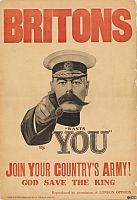 One hundred years today, on June 5, 1916, Lord Horatio Herbert Kitchener, the British Secretary of State for War, drowned when the HMS Hampshire sank in the North Sea off the Orkneys. Of the 655 crewmen and 7 passengers, including Lord Kitchener, aboard the cruiser, only 12 crewmen survived. His death, just days after the ambiguous outcome of the Battle of Jutland, came as great shock to the British populace. Lord Kitchener’s death would also spawn a myriad of conspiracy theories.
One hundred years today, on June 5, 1916, Lord Horatio Herbert Kitchener, the British Secretary of State for War, drowned when the HMS Hampshire sank in the North Sea off the Orkneys. Of the 655 crewmen and 7 passengers, including Lord Kitchener, aboard the cruiser, only 12 crewmen survived. His death, just days after the ambiguous outcome of the Battle of Jutland, came as great shock to the British populace. Lord Kitchener’s death would also spawn a myriad of conspiracy theories.
Lord Kitchener was famous for his imperial campaigns in Khartoum and the Boer War and had played a central, if not always a successful role in shaping British military strategy during the First Word War. His image on recruiting posters is considered to be one of the most enduring and iconic images of the war. Despite his fame and ubiquitous image on recruiting posters, Kitchener was facing increased criticism from within the British government. Lord Kitchener had been convinced to support the Gallipoli campaign which was a costly defeat and also became caught up in the Shell Crisis of 1915 when the British forces faced a shortage of artillery shells on the front lines of World War I.
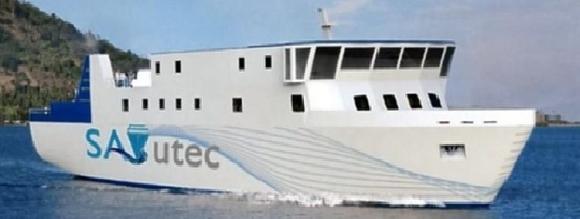 The UK’s University of Strathclyde won the top prize in the third Worldwide Ferry Safety Association’s Student Design Competition for a Safe Affordable Ferry. The $5,0000 USD award for the design was presented by Bekir Sitki Ustaoglu, Asia Pacific chief of the IMO Technical Cooperation Division, at the Ferry Safety and Technology Conference in New York. The presentation was made at the at the Ferry Safety and Technology Conference in New York on June 2.
The UK’s University of Strathclyde won the top prize in the third Worldwide Ferry Safety Association’s Student Design Competition for a Safe Affordable Ferry. The $5,0000 USD award for the design was presented by Bekir Sitki Ustaoglu, Asia Pacific chief of the IMO Technical Cooperation Division, at the Ferry Safety and Technology Conference in New York. The presentation was made at the at the Ferry Safety and Technology Conference in New York on June 2.
Teams from Hochschule Bremen – City University of Applied Sciences in Germany won the two second prizes. Two third prizes were awarded to India’s Tolani Maritime Institute and the United States Naval Academy.
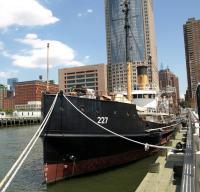 The historic lighthouse tender Lilac is hosting a literary salon to celebrate World Oceans Day. From their press release:
The historic lighthouse tender Lilac is hosting a literary salon to celebrate World Oceans Day. From their press release:
One Grand Books has organized a literary evening on board the museum ship Lilac to mark World Oceans Day, a global day of ocean celebration, on June 8, 2016. This event opens the ship’s 2016 season.
The literary salon opens at 6:30 PM with wine provided by the event sponsor Bedell Cellars of Long Island. Readings begin at 7:00 and will include presentations by Radiolab host Robert Krulwich and Pulitzer Prize-winning novelist Michael Cunningham. A musical interlude will be offered by Angela McCluskey and Paul Cantelon with Linked Dance Theater performing excerpts from their site-specific work The Soul of the Sea based on The Fisherman And His Soul, a short story by Oscar Wilde. Book sales and signings follow.
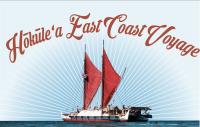 Continuing her epic voyage around the globe, the Polynesian voyaging canoe Hōkūleʻa will officially make her arrival in New York harbor on Sunday, June 5th. She will dock at North Cove Marina in Manhattan on the Hudson River at 9:00 a.m., followed by an Arrival Ceremony with Native Americans and local officials. The event will feature cultural performances by Native American tribes and hula hālau (troupes) from New York. Events will continue throughout the following week. Continue reading
Continuing her epic voyage around the globe, the Polynesian voyaging canoe Hōkūleʻa will officially make her arrival in New York harbor on Sunday, June 5th. She will dock at North Cove Marina in Manhattan on the Hudson River at 9:00 a.m., followed by an Arrival Ceremony with Native Americans and local officials. The event will feature cultural performances by Native American tribes and hula hālau (troupes) from New York. Events will continue throughout the following week. Continue reading
 A very interesting program coming up on the historic lighthouse tender ex-USCGC Lilac at Pier 25 on the Hudson River in Manhattan. From their press release:
A very interesting program coming up on the historic lighthouse tender ex-USCGC Lilac at Pier 25 on the Hudson River in Manhattan. From their press release:
Linked Dance Theatre will stage “Soul of the Sea,” a site-specific immersive dance performance on board the museum ship Lilac from June 7 to 11, 2016.
“Soul of the Sea” is an adaptation of Oscar Wilde’s “The Fisherman and his Soul.” Wilde’s short story tells of a fisherman who falls in love with a mermaid after catching her in his net, but discovers he must give up his soul in order to marry her.
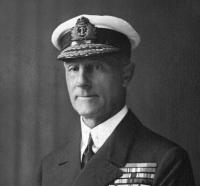
Admiral John Jellicoe
The Battle of Jutland, which was fought 100 years ago today, was one of the greatest modern sea battles and arguably, changed the course of World War I. In the battle, 250 ships, manned by 10,000 sailors fought for 12 hours. The battle was fought between the British Royal Navy’s Grand Fleet under Admiral Sir John Jellicoe, against the Imperial German Navy’s High Seas Fleet under Vice-Admiral Reinhard Scheer in the North Sea, near the coast of Denmark’s Jutland Peninsula. After the battle, both sides claimed victory. The British lost more ships and men than the Germans, who claimed a tactical victory. The battle was, however, a clear strategic defeat for Germany, proving that the Imperial German Navy could not defeat the Royal Navy nor lift the naval blockade that was slowly starving Germany.
While the British are generally acknowledged as victors of the battle, there remains considerable controversy over the naval commanders, particularly the role played by Admiral Jellicoe. Some have claimed that if Admiral Jellicoe had acted more aggressively that he might have cut off the German navy before it could flee back to port. Others argue that Jellicoe acted prudently from a position of strength.
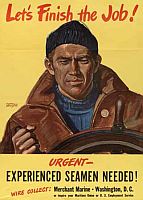 What was the most dangerous service in World War II? The Army, the Navy, the Marines? In fact, it was the Merchant Marine. 1 in 26 mariners serving aboard merchant ships in World WW II died in the line of duty, suffering a greater percentage of war-related deaths on average than all other U.S. services. Officially, a total of 1,554 ships were sunk due to war conditions, including 733 ships of over 1,000 gross tons. An estimated 243,000 sailors served in the Merchant Marine during the war and roughly 9,500 died either at sea, as the result of wounds ashore or as POWs. During the early years of the war, the loss of merchant ships and sailors to submarine attacks was so great there was a real concern that Germany might succeed in winning the war by starving the Allies of supplies. The mass production of merchant ships in the United States and the parallel rapid training of hundreds of thousands of merchant sailors kept the necessary supplies flowing across the Atlantic.
What was the most dangerous service in World War II? The Army, the Navy, the Marines? In fact, it was the Merchant Marine. 1 in 26 mariners serving aboard merchant ships in World WW II died in the line of duty, suffering a greater percentage of war-related deaths on average than all other U.S. services. Officially, a total of 1,554 ships were sunk due to war conditions, including 733 ships of over 1,000 gross tons. An estimated 243,000 sailors served in the Merchant Marine during the war and roughly 9,500 died either at sea, as the result of wounds ashore or as POWs. During the early years of the war, the loss of merchant ships and sailors to submarine attacks was so great there was a real concern that Germany might succeed in winning the war by starving the Allies of supplies. The mass production of merchant ships in the United States and the parallel rapid training of hundreds of thousands of merchant sailors kept the necessary supplies flowing across the Atlantic.
Despite the important of the merchant marine to the war effort and extreme dangers, merchant sailors were civilians who did not receive military benefits. Merchant mariners from World War II finally received full benefits only in 1988.
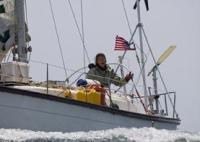 A few days ago, Donna Lange returned home to Narragansett Bay after completing her second solo circumnavigation on Inspired Insanity, her Southern Cross 28. An event was held in her honor at the Herreshoff Museum in Bristol, RI for family and friends to welcome her home. Lange had set off from Bristol on July 31, 2105 in an attempt to sail single-handed non-stop around the world. As she neared Cape Horn, however, her boat suffered rigging damage and Lange decided to divert to the Panama Canal for repairs.
A few days ago, Donna Lange returned home to Narragansett Bay after completing her second solo circumnavigation on Inspired Insanity, her Southern Cross 28. An event was held in her honor at the Herreshoff Museum in Bristol, RI for family and friends to welcome her home. Lange had set off from Bristol on July 31, 2105 in an attempt to sail single-handed non-stop around the world. As she neared Cape Horn, however, her boat suffered rigging damage and Lange decided to divert to the Panama Canal for repairs.

Timbers from HMS Namur
On Thursday, the Chatham Historic Dockyard opened its new exhibit “Command of the Oceans” to the public. The centerpiece of the display are timbers from the 90-gun second-rate ship of the line, HMS Namur. The ship was built in the Chatham dockyard in 1756 and perhaps more importantly, also scrapped in the dockyard in 1833. At some point, some of her timbers were covered by the floorboards of a wheelwright’s workshop. In 1995, roughly 10% of the timbers of a ship were found beneath six layers of floorboards. After more than a decade of investigation, the frames were identified in 2012 as belonging to HMS Namur. The discovery of the timbers from the Namur is described on the dockyard website as “the single most important warship discovery in Northern Europe since that of the MARY ROSE.”
Seventy-five years today, the Royal Navy sank the German battleship Bismark in a three-day running battle in which the Bismark sunk the British battle cruiser HMS Hood. Ultimately, the German battleship was disabled when her rudder was damaged in a torpedo attack by obsolescent Fairey Swordfish biplane torpedo bombers from the aircraft carrier HMS Ark Royal. Here is a British newsreel of the events. Thanks to Alaric Bond for contributing to this post.
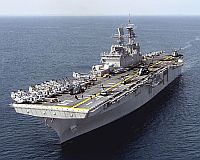 Yesterday thousands lined the shores of the Hudson to watch the Fleet Week Parade of Ships. Unfortunately, this year, I couldn’t be there. Here, courtesy of the US Navy, is a unique view of the festivities from the flight deck of one of the main attractions, USS Bataan. USS Bataan (LHD-5) is a Wasp-class amphibious assault ship commissioned in 1997. The ship carried more than 500 Marines and Sailors with the 24th Marine Expeditionary Unit who will participate in this year’s Fleet Week.
Yesterday thousands lined the shores of the Hudson to watch the Fleet Week Parade of Ships. Unfortunately, this year, I couldn’t be there. Here, courtesy of the US Navy, is a unique view of the festivities from the flight deck of one of the main attractions, USS Bataan. USS Bataan (LHD-5) is a Wasp-class amphibious assault ship commissioned in 1997. The ship carried more than 500 Marines and Sailors with the 24th Marine Expeditionary Unit who will participate in this year’s Fleet Week.
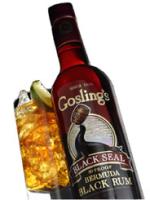 May 24th was not only the 75th anniversary of the tragic sinking of HMS Hood. It was also Bermuda Day. On this, the morning after Bermuda Day, it seems worthwhile to think of the Dark and Stormy nights spent on the beautiful Atlantic Island. I have a blurry recollection of several Dark and Stormy nights on the docks in St. George after rolling off a ship. I am not referring to the classic opening line, “It was a dark and stormy night” from Edward Bulwer-Lytton‘s 1830 novel Paul Clifford. No, I am speaking the classic Bermudian sailor’s drink, the Dark and Stormy.
May 24th was not only the 75th anniversary of the tragic sinking of HMS Hood. It was also Bermuda Day. On this, the morning after Bermuda Day, it seems worthwhile to think of the Dark and Stormy nights spent on the beautiful Atlantic Island. I have a blurry recollection of several Dark and Stormy nights on the docks in St. George after rolling off a ship. I am not referring to the classic opening line, “It was a dark and stormy night” from Edward Bulwer-Lytton‘s 1830 novel Paul Clifford. No, I am speaking the classic Bermudian sailor’s drink, the Dark and Stormy.
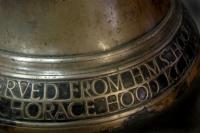 On May 24, 1941, the battlecruiser HMS Hood exploded after being struck by several shells from the German battleship Bismark during the Battle of Denmark Strait. The Hood sank within three minutes with the loss of 1,415 sailors, all but three of her crew; the largest loss of life suffered by any single British warship in the history of the Royal Navy. Today, to commemorate the 75th anniversary of the loss of the Hood and the sailors who died aboard her, HRH Princess Anne struck eight bells on the Hood‘s recently retrieved ship’s bell, as descendants of the lost sailors looked on.
On May 24, 1941, the battlecruiser HMS Hood exploded after being struck by several shells from the German battleship Bismark during the Battle of Denmark Strait. The Hood sank within three minutes with the loss of 1,415 sailors, all but three of her crew; the largest loss of life suffered by any single British warship in the history of the Royal Navy. Today, to commemorate the 75th anniversary of the loss of the Hood and the sailors who died aboard her, HRH Princess Anne struck eight bells on the Hood‘s recently retrieved ship’s bell, as descendants of the lost sailors looked on.
How the bell came to be retrieved in time for the ceremony is a story in its own right. Continue reading
 Starting Wednesday this week, the fleet will be in town, well part of it anyway, to celebrate the 28th observance of Fleet Week New York. Eight Navy warships, two Coast Guard cutters, and a Marine expeditionary unit will converge on the harbor. An estimated 4,500 sailors, Marines, and Coast Guardsmen, as well as Royal Canadian sailors and Naval Academy midshipmen, will be participating. The festivities kick off with the Parade of Ships on Wednesday, followed by free ship tours at docks around the harbor. Click here to learn more about the ships and locations.
Starting Wednesday this week, the fleet will be in town, well part of it anyway, to celebrate the 28th observance of Fleet Week New York. Eight Navy warships, two Coast Guard cutters, and a Marine expeditionary unit will converge on the harbor. An estimated 4,500 sailors, Marines, and Coast Guardsmen, as well as Royal Canadian sailors and Naval Academy midshipmen, will be participating. The festivities kick off with the Parade of Ships on Wednesday, followed by free ship tours at docks around the harbor. Click here to learn more about the ships and locations.
 When I first came to New York in the last quarter of the last century, I went to work for Moore-McCormack Lines, which had a terminal in Brooklyn on the Gowanus Canal. For better or worse, the Brooklyn waterfront has undergone some major changes in the last forty years. If you are in the New York area next Thursday, be sure to catch the Working Harbor Committee‘s next Hidden Harbor tour — Brooklyn Waterfront Past & Present to catch a glimpse of what ahs changed and what has stayed the same. Highlights of the tour will include the Brooklyn Navy Yard, the city’s new waterfront recycling facility at Gowanus Bay, and the working rail-to-barge connection at Brooklyn Army Terminal.
When I first came to New York in the last quarter of the last century, I went to work for Moore-McCormack Lines, which had a terminal in Brooklyn on the Gowanus Canal. For better or worse, the Brooklyn waterfront has undergone some major changes in the last forty years. If you are in the New York area next Thursday, be sure to catch the Working Harbor Committee‘s next Hidden Harbor tour — Brooklyn Waterfront Past & Present to catch a glimpse of what ahs changed and what has stayed the same. Highlights of the tour will include the Brooklyn Navy Yard, the city’s new waterfront recycling facility at Gowanus Bay, and the working rail-to-barge connection at Brooklyn Army Terminal.
 The website for the Republic of Null Island reads: “Welcome to Null Island! The Republic of Null Island is one of the smallest and least-visited nations on Earth. Situated where the Prime Meridian crosses the Equator, Null Island sits 1600 kilometres off the western coast of Africa.” The website goes on to describe the geography, the people and the history of this “least-visited nation.”
The website for the Republic of Null Island reads: “Welcome to Null Island! The Republic of Null Island is one of the smallest and least-visited nations on Earth. Situated where the Prime Meridian crosses the Equator, Null Island sits 1600 kilometres off the western coast of Africa.” The website goes on to describe the geography, the people and the history of this “least-visited nation.”
In, fact Null Island, at a latitude and longitude of 0,0, does not exist. Or does it? It seems that thousands of addresses appearing on the Internet show up as having a longitude and latitude of 0,0. Given all the houses, restaurants and office buildings which share the same 0,0 latitude and longitude, Null Island must be a very crowded place indeed.
So, what is going on? Continue reading
